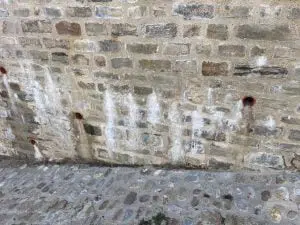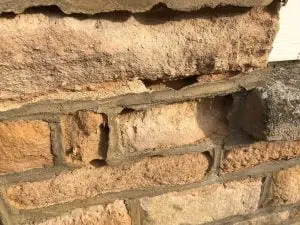
Should I Remove Cement-Based Render?
When removing non-porous cement-based render, there are a few things to consider. One is the historical value of the render. If the render is part of the original fabric of the building, then it may be worth keeping for historical reasons. Another thing to consider is the condition of the render. If the render is in good condition and dampness does not appear inside your building, there may be no need to remove it immediately. However, if the render is in poor condition and is beginning to cause damage to the underlying masonry, then it would be best to remove it. Ultimately, whether or not to keep the render on your building should be made on a case-by-case basis.
Render is a material used to cover external walls. It is composed of cement, sand and sometimes lime. Modern render systems are available, but only lime-based renders should be applied to a traditional home. It is used on walls wet and then left to dry. Once dry, it becomes hard and provides a smooth surface. Render can be removed from brick and stone walls using many different methods, depending on the application of the render. If working on listed buildings, hand tools are generally the advised method, and at other times, power tools are required with skilled operators to ensure minimal damage occurs.
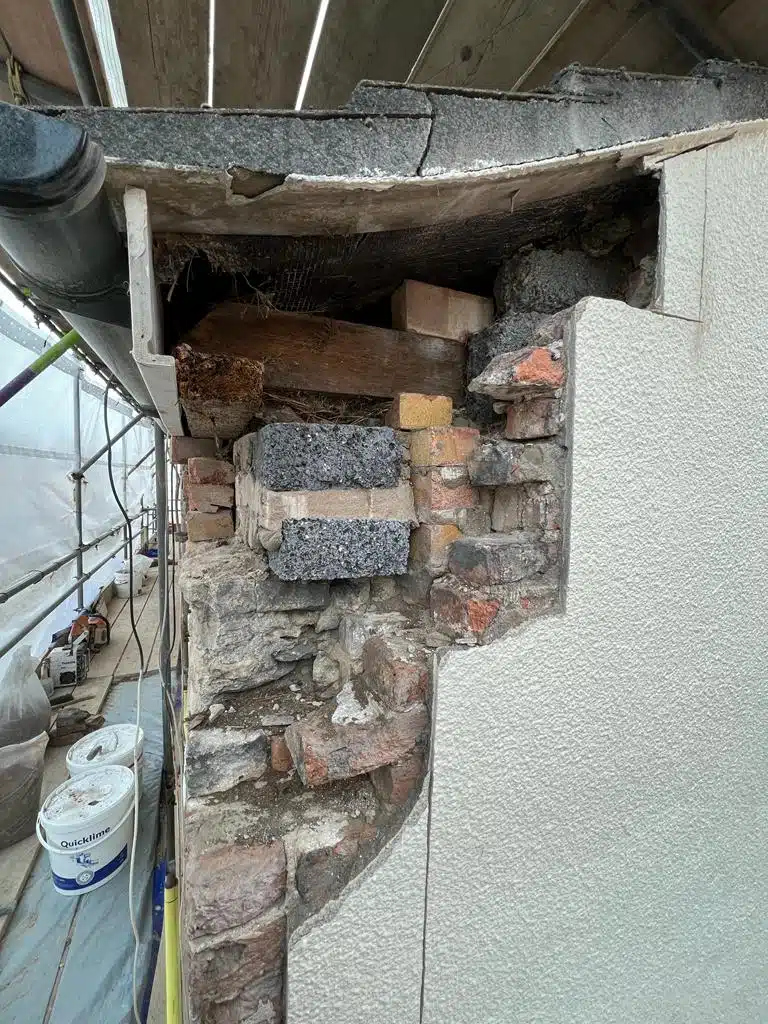
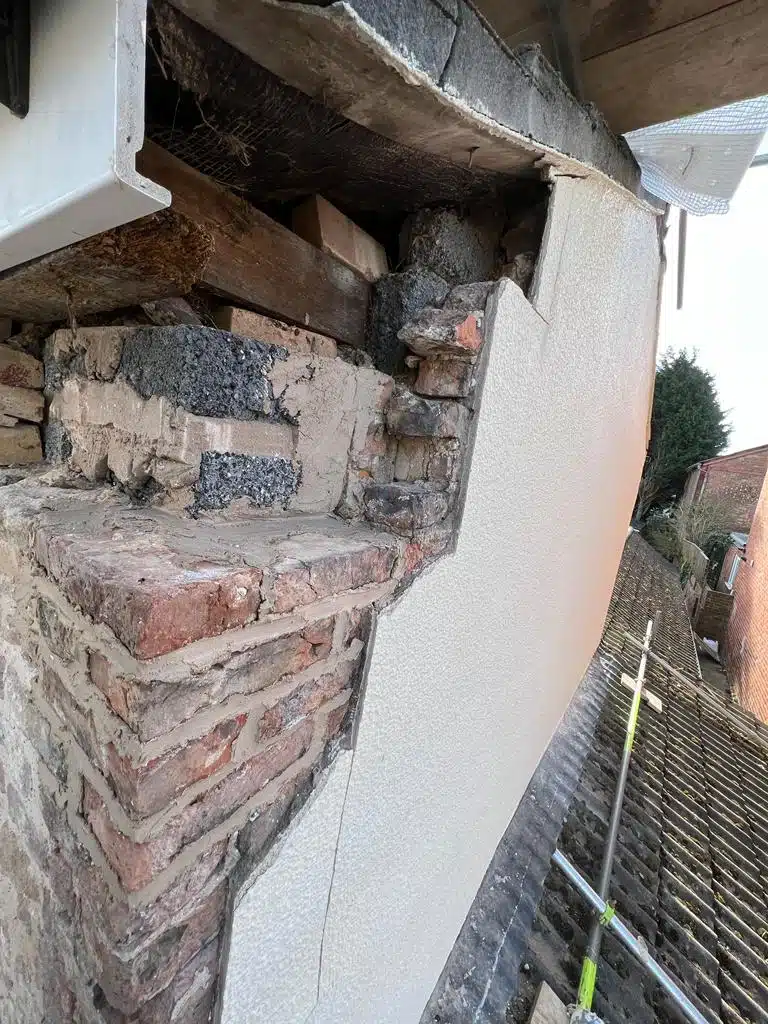

How to Remove Render From Your Building
The most common way to remove cement-based render from brickwork or stone masonry is by chiselling it off the wall. This can be done using a few different tools, such as a cold chisel, Club hammer, bolster chisel or electric rotary hammer drill. Another way to remove render is by sandblasting or soda blasting.
Sand or soda blasting is used for large areas pasted thinly onto the masonry. However, it can also damage the underlying fabric. As such, it is vital to consult a professional before sandblasting cement-based renderings off a wall.
Finally, the remaining parts of the render can be removed using Thermatech or doff. These devices are super-heated steam cleaners; this cleaning method is chosen in the heritage industry.
Thermatech is the fastest method for removing masonry paints from listed buildings. The super-heated steam peels the paint off the masonry surface, causing little to no damage to the underlying fabric. A Doff or Thermatech system is one of the safest ways to clean listed buildings.

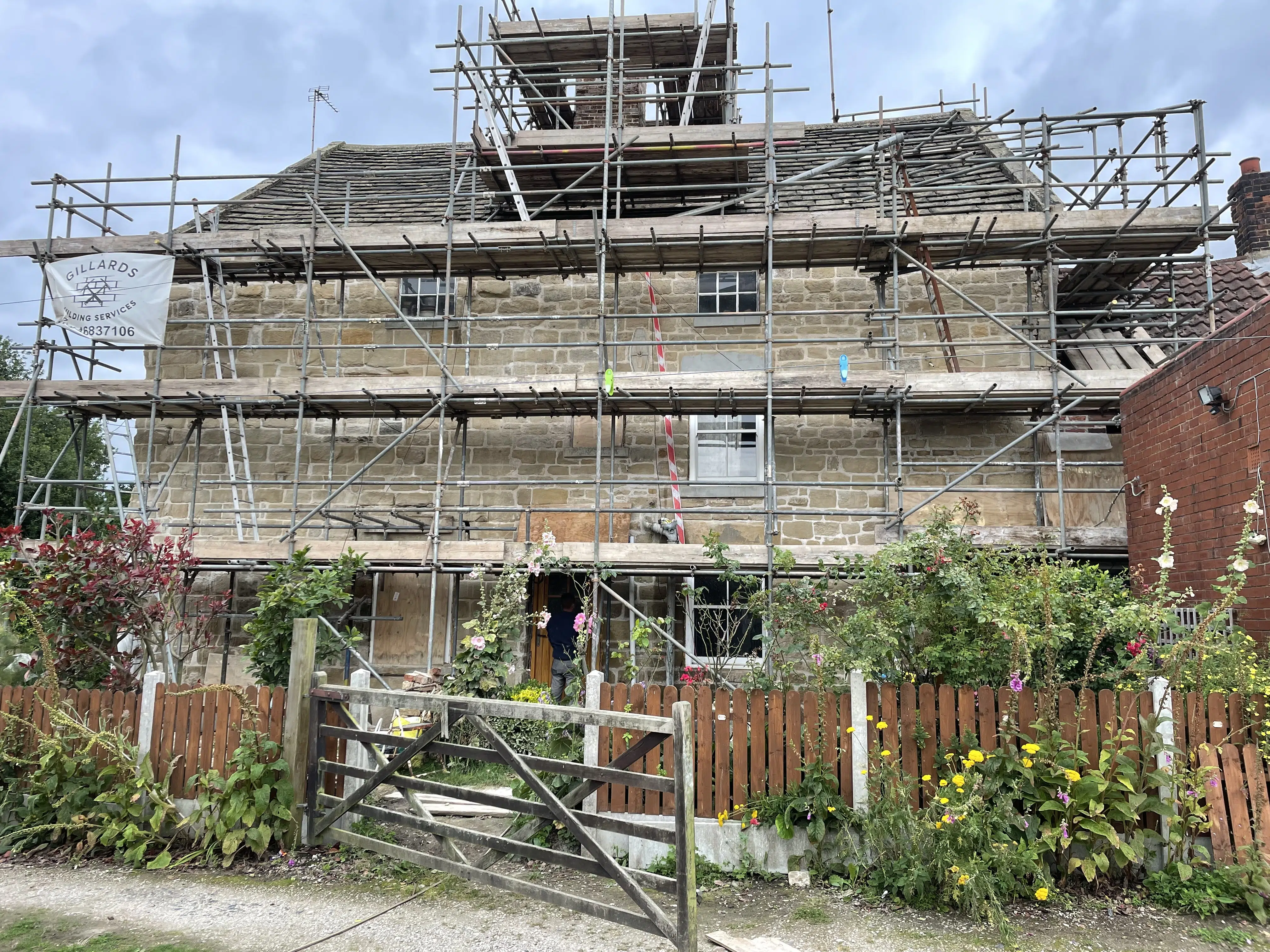
Removing Non-Porous Renders
Cement-based renders were introduced in the 19th century and became widely used due to their low cost and easy availability. However, these non-porous renders trap moisture behind them, causing damp patches to appear internally and leading to masonry decay and structural instability. Removing cement-based render can also be complex and time-consuming, often revealing hidden damage that requires extensive repair work. In addition, non-porous renders are often very difficult to remove without causing extensive damage to the underlying masonry. For these reasons, it is advised to use a professional mason so minimal damage is caused and any issues can be addressed correctly.
Peeling or flaking paintwork is not only unsightly, but it can also be a sign of dampness within the walls of a building. Damp can lead to erosion, which in turn can damage the structure of a building. In some cases, water can also pose a health and safety risk. If you suspect your property may suffer from moisture, assessing it with somebody who understands traditional buildings is vital. If water vapour is present, one possible remedy is to remove the non-porous render and gypsum plaster from your walls. Removing impermeable materials from the walls will help to improve air circulation and allow the walls to dry out faster.
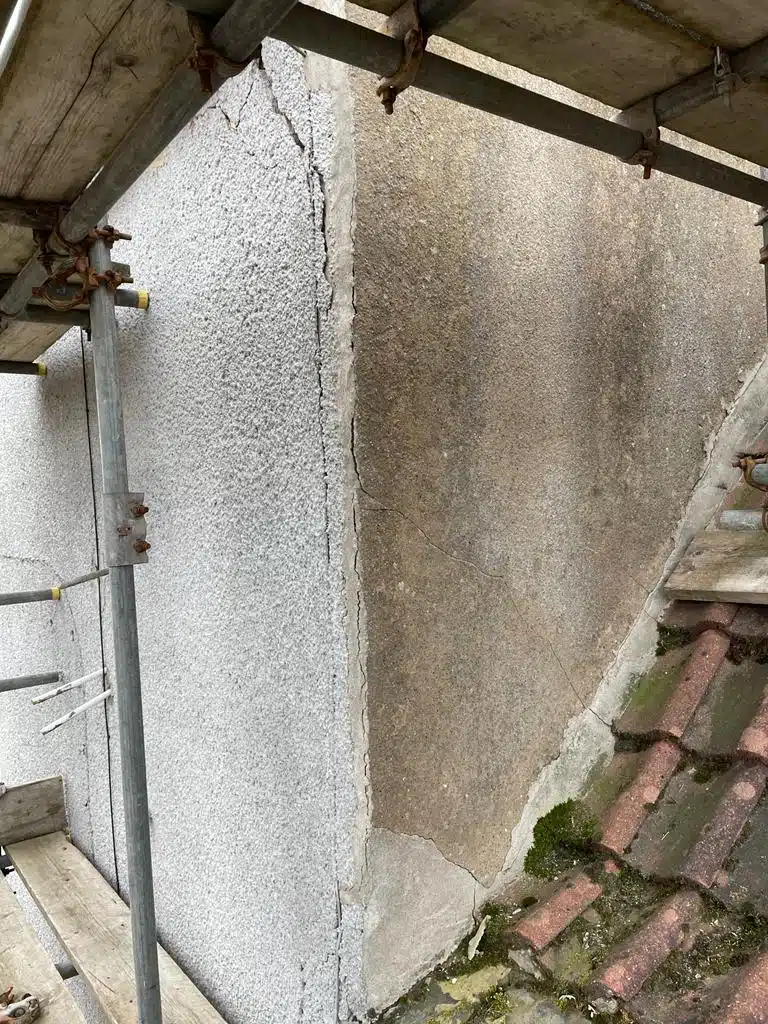
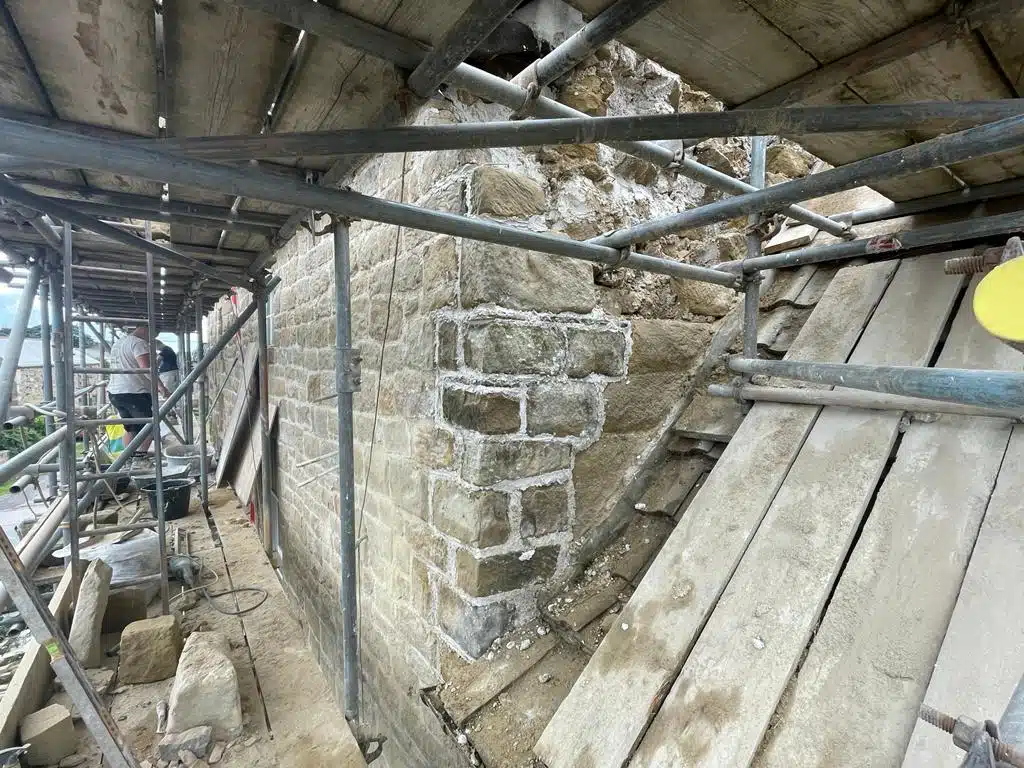
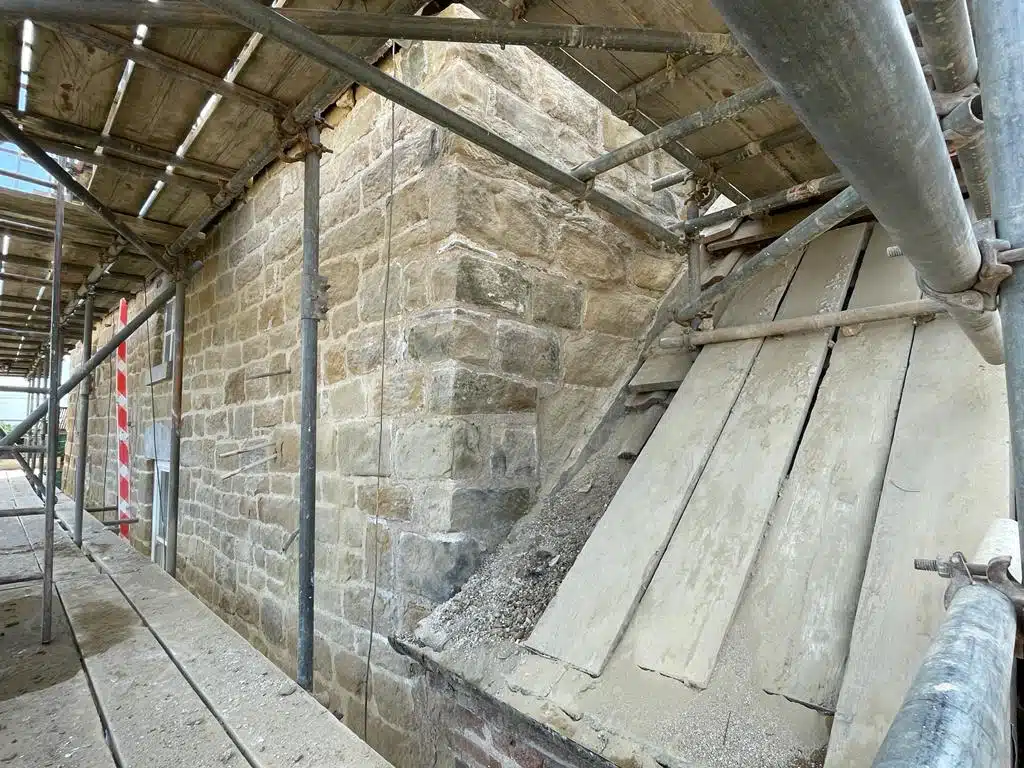
Non-Porous and Impermeable Renders
Non-porous renders and pebble-dashed walls have been a big concern for surveyors and conservationists for many years. They cause significant health and safety issues, mainly when applied to porous masonry in public areas. The cement-based render causes moisture to get trapped between it and the wall. This trapped moisture causes dampness and masonry erosion, which then causes the render to pull freely away from the wall.
When the masonry behind the render starts to decay, it is only a matter of time before pieces fall. The longer non-porous materials are left on walls or chimney stacks, the more damage and risk of injury they can cause. If you have non-porous renders on your building and can see cracking, it is advised to undertake repairs as soon as possible. Surveys show that most facilities with this type of damage are in a poor state of repair and pose a severe risk to public safety.

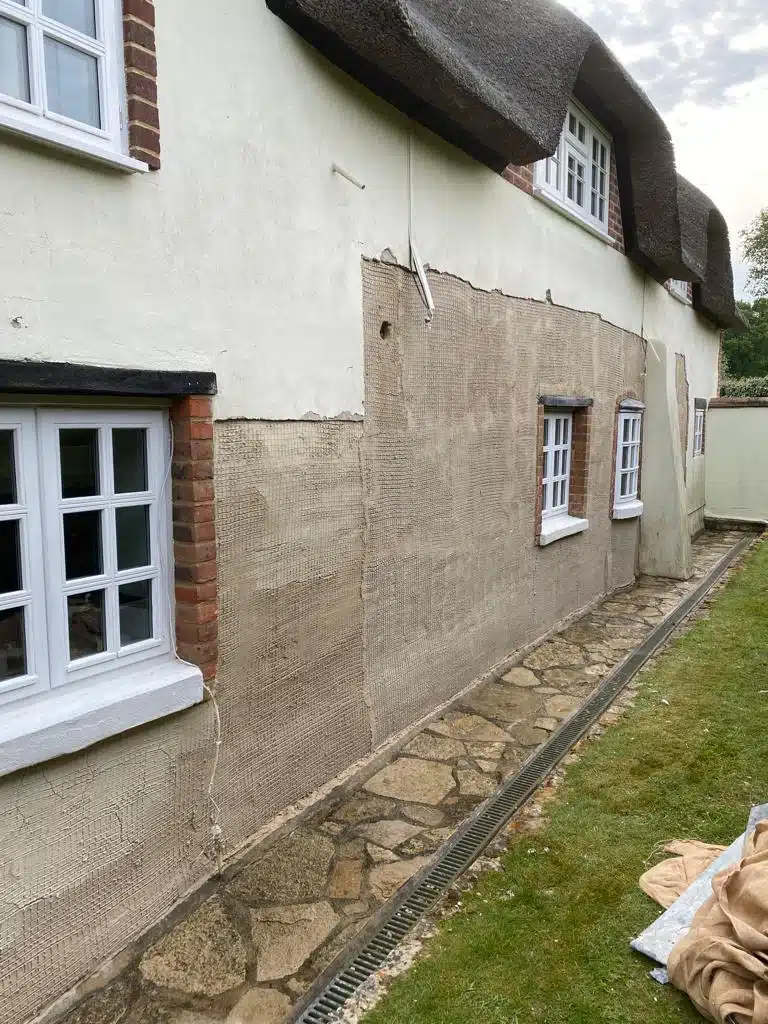

Traditional Lime Render
Lime render is a traditional building material used in the UK since the Romans invaded England. It was used to protect buildings in exposed areas and also to decorate the exterior of buildings. The lime render is made from lime and sand; the lime render is highly breathable, allowing moisture to escape from the underlying masonry.
Allowing moisture to escape helps to prevent dampness and rot. Damp and decay can occur when water is trapped behind modern renders made from cement or synthetic materials. Lime render is flexible, accommodating movement in the underlying structure without cracking. This flexibility makes it ideal for use on historic buildings, which often settle over time. In addition, lime render can be tinted or pigmented to create a wide range of finishes, making it a versatile material that can achieve various looks. For all these reasons, lime render is an ideal choice for anyone looking to restore or preserve a historic building,
A lime-rendered building is a beautiful sight. The structure rises, its curved lines and simple design a testament to a bygone era. And yet, despite its age, the building looks like it could have been built yesterday. Lime render is highly durable and requires very little maintenance. If you are lucky enough to own a lime-rendered building, all you need to do to keep it in good condition is lime wash it every ten years or when showing signs of wear. Lime render is made from lime and sand, both highly absorbent materials. The permeability of lime render means moisture can pass through the fabric, allowing it to evaporate. Trapping moisture behind impermeable cement-based materials leads to dampness problems inside the building. However, lime render provides a protective barrier against dampness, helping keep your facility in good condition for many years.
Lime Harling
Hurled, or cast-on, finish consisting of slaked lime and coarse aggregate mortar, usually with a rough-textured surface. It is the most common type of traditional surface finish found in Scotland on masonry buildings of solid wall construction. The finish provides a vital role in the durability of the building by allowing the masonry to breathe and deflecting weathering forces such as wind-driven rain. It also has an aesthetic value, providing a warm tone and texture unique to Scottish architecture.
Lime harling gives a rough cast finish that is highly porous due to the open pores when finished. It is, without a doubt, the best finish for buildings in highly exposed areas. The lime particles act as capillary channels allowing the wind to draw moisture out over a larger area. The porosity of the finish allows any water that does penetrate the surface to be drawn back out quickly, preventing it from causing dampness or corrosion beneath it. For these reasons, lime harling has been used for centuries to protect buildings from the elements, and it remains a compelling option today.
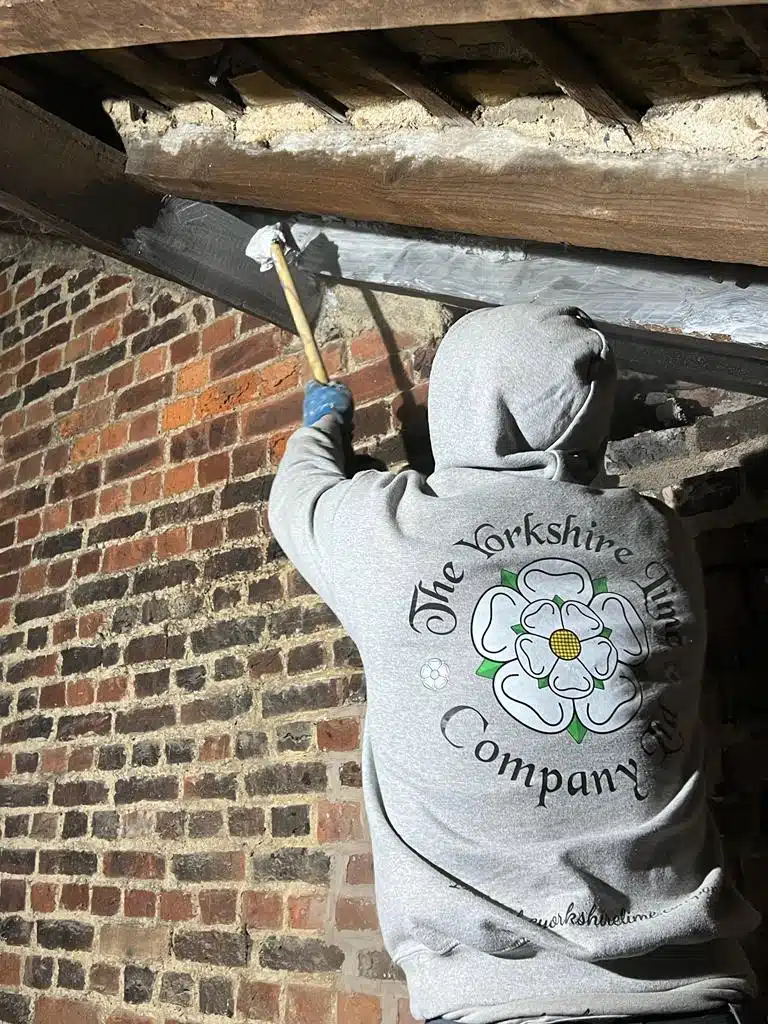
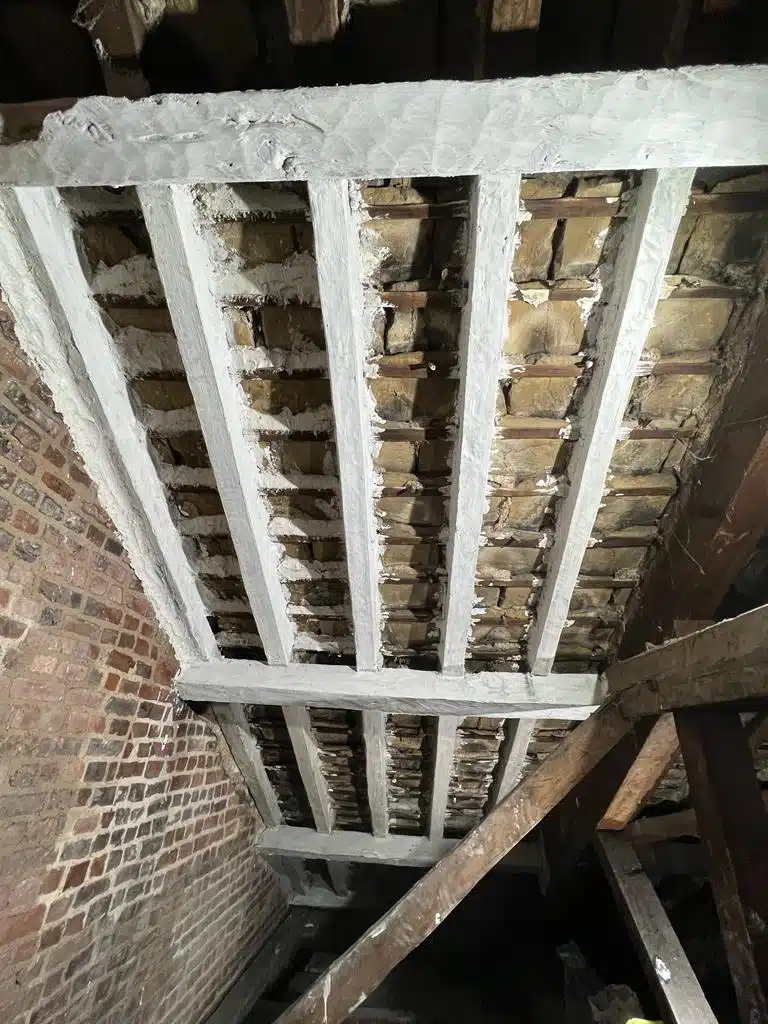
LimeWashing
Limewashes were used for centuries to decorate and protect rendered buildings from the elements. The traditional recipe calls for quicklime, which is applied while hot. Using lime wash hot means it sticks to the surface better; this allows the limewash to penetrate the render and harling. Limewash creates a weather-resistant barrier that protects render. At the same time, lime wash allows moisture to be drawn back out of the building through capillary action.
Using lime wash instead of impermeable paints prevents the build-up of condensation, which can lead to damp forming and structural damage. In addition to its practical benefits, limewash gives buildings a clean appearance. For this reason, it remains a popular choice among those who wish to protect their homes and improve their curb appeal.
The Romans used lime for various purposes, including painting walls and ceilings. Lime was also used to whitewash buildings, which helped to reflect heat and keep rooms cool in the summer months. The Victorians used lime paint, particularly in cellars and other damp areas. Painting walls with lime wash could regulate moisture levels and prevent mould from forming. Today, limewash is still used in many historic buildings as a way to preserve them.


